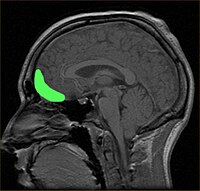
Photo from wikipedia
Children coordinate two tasks simultaneously at several occasions throughout the day; however, this dual-task ability and its development across childhood are poorly understood. Therefore, the current study investigated age-related changes… Click to show full abstract
Children coordinate two tasks simultaneously at several occasions throughout the day; however, this dual-task ability and its development across childhood are poorly understood. Therefore, the current study investigated age-related changes in children's dual-task ability using a large cross-sectional sample of 8- to 13-year-old children (N = 135). In our dual-task methodology, children were asked to walk across an electronic pathway while performing three concurrent cognitive tasks. These tasks targeted at children's executive function components: inhibition, switching, and updating skills. Our findings indicate associations between age and children's stride time variability but not with normalized velocity. Younger children showed higher stride time variability in the dual-task situation as compared with older children after accounting for their single-task performance, intelligence, anthropometric variables, and sex, indicating a more regular gait pattern in older children. Furthermore, age was differently related to children's accuracy in solving the concurrent cognitive tasks. Whereas age was associated with children's performance in the updating and switching task, there was no relation between age and children's inhibitory skills. In addition, our data imply that children's dual-task ability was associated with a number of individual variables. In particular, children with higher intelligence scores showed fewer errors and girls showed lower stride time variability in the dual tasks. Our results suggest a considerable developmental progression in children's ability to coordinate two simultaneous tasks across middle childhood. Furthermore, our study qualifies previous dual-task research and implies that heterogeneous findings may be related to a differential involvement of executive function components in the dual task.
Journal Title: Journal of experimental child psychology
Year Published: 2021
Link to full text (if available)
Share on Social Media: Sign Up to like & get
recommendations!